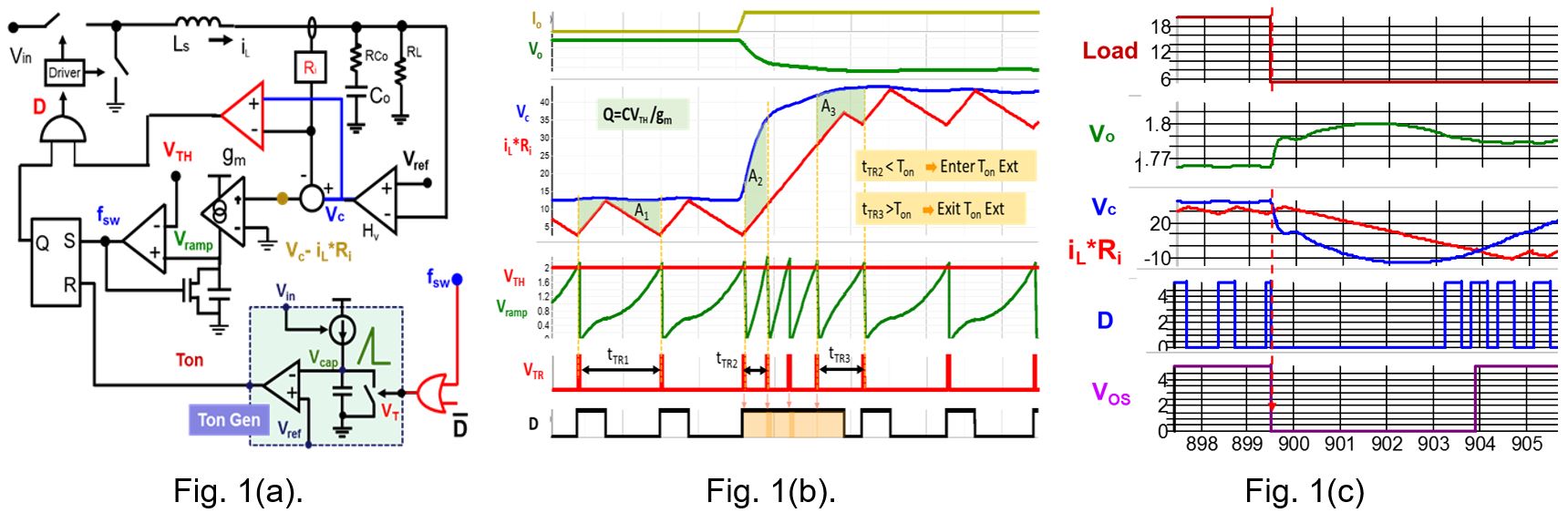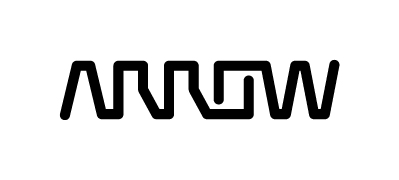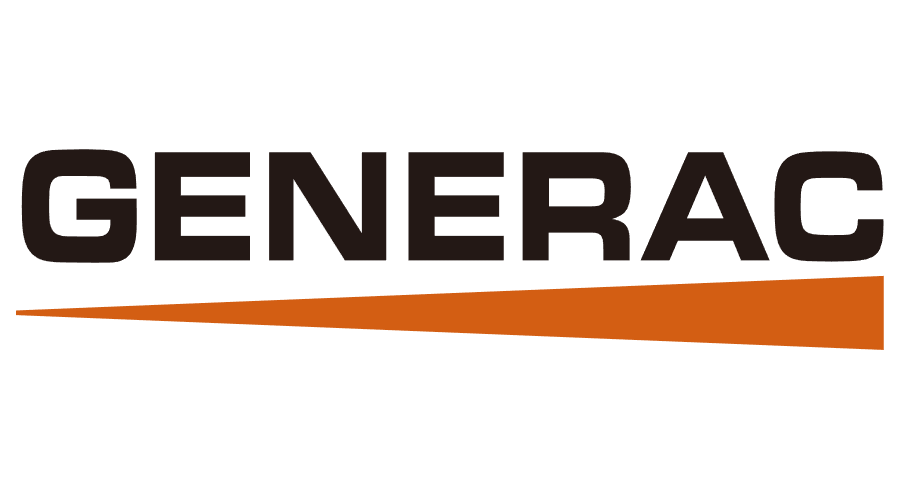LIBRARY
A New Inverse Charge Constant On-Time (IQCOT) Control with Fast and Optimized Transient Response

The proposed structure with conventional COTCM control, the IQCOT, is presented in Fig. 1. As shown, the difference between Vc and IL × Ri is converted into current by using a gm amplifier, and this current is used to charge a capacitor. Then, this capacitor voltage (Vramp) is compared with a fixed threshold voltage (VTH) to create pulse frequency fsw. When Vramp touches VTH, the off-time ends and a fixed on-time (Ton) is started. In case of a large load step-up transient, when Vc-IL × Ri becomes very large, fsw pulses can occur even before the end of the previous on-time. If these very close pulses are allowed to merge together to create a longer on-time (Fig. 2), significant under-shoot reduction can occur at the output. Another important feature is that, since the fsw pulse increment is proportional to Vc-IL × Ri (Fig. 2), the Ton extension is eventually linearly proportional to the Vout under-shoot. This will eliminate any chance of overcorrection or ring-back of Vout, which is a major problem in Ton extension method by nonlinear controls. Fig. 4 shows that the IQCOT not only reduces under-shoot by naturally increasing the Ton, but also its response is naturally optimized at different transient conditions. Fig. 3 shows that when an over-shoot is created in Vout at the load step-down, Vc decreases very quickly and crosses the IL × Ri. This can be used to create a logic (like Vos in Fig. 3), and can be used to immediately truncate the constant Ton, thus reducing the Vout over-shoot (as shown in Fig. 5).






























































































